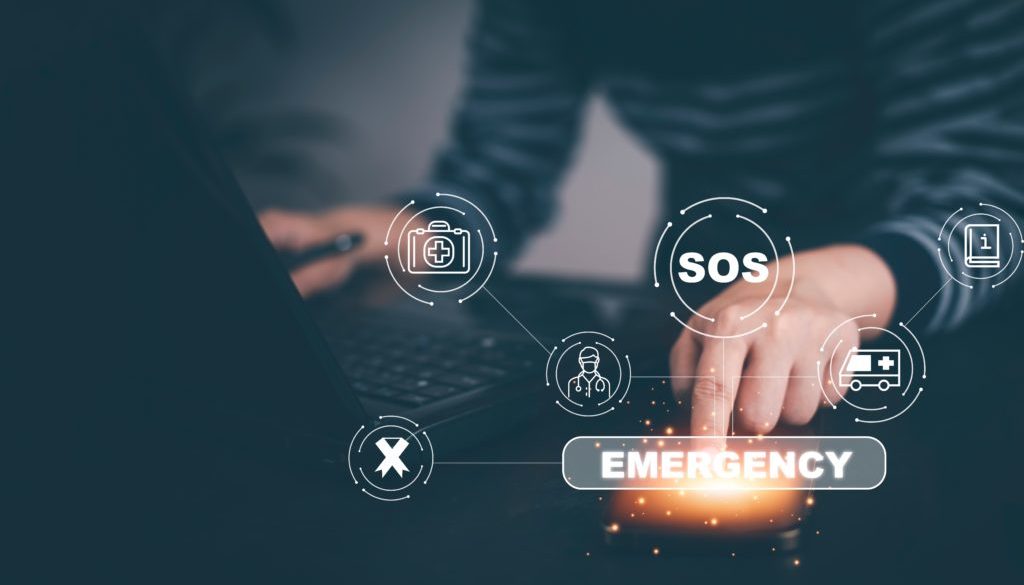How to Create an Emergency Communication Plan
Updated 4/30/24
When disaster strikes — whether it’s a power outage, act of terror, severe weather event, or threat to public health — is your organization prepared? Is your team ready to act, collaborate, and most importantly, communicate internally and with the public.
Creating an emergency communication plan can prepare your organization to respond to the unexpected. An emergency communication plan can minimize impact to people’s health and safety, and also help your team recover more quickly.
In this blog, we’ll discuss how to create a step-by-step, strategic emergency communication plan for your business. Your plan will outline who is in charge, who your communications are for, which communication tools you might use, and more.
Determine the goal of your emergency communication plan
First, determine why you are creating your emergency communication plan and what it’s for. Your goal doesn’t have to be long or complicated. It may be as simple as “To create an organized process for communicating internally and externally in the event of an emergency.”
Whatever you determine your goal to be, you can then check that other components of your plan all fall in line with it.
Identify the audience for your plan
Who is your plan designed for? Who do you want to keep informed during an unexpected event?
This step in building your emergency communication plan will help you figure out how many individualized messages you’ll need. A one-size-fits-all approach to messaging may save time, but it won’t give people the information they need.
Your audience may include:
- Employees, including remote or traveling employees
- Customers
- Users or members
- Visitors to your facilities
- Social media followers
- Vendors or partners
- Investors
- The general public
- Media outlets
- Other businesses in the community
- Government agencies and emergency personnel
Don’t forget to add contact information for each group or person in your plan.
Create a communication chain of command
Everyone involved in your emergency communication plan must know their role and responsibilities. It’s important that they know who to share information with or who to look depend on for leadership. Establish a chain of command so that everyone is on the same page.
The order will depend on your organization, but generally, it’s a good idea to notify the president, founder, CEO, or board first. Someone in charge of public relations or communications may be notified next.
From there, you might choose leaders in each department and place them in charge of informing their team. This may help information get shared quickly and efficiently.
Use the right communication system
A secure and reliable mass notification system is a crucial part of a successful emergency communication plan. Your notification system should provide unlimited messages in multiple languages and access on any device. And when seconds count, you must have the ability to send and receive messages immediately.
Your chosen system may allow employees to opt-in to alerts on their phones or desktop computers, but remember to consider the needs of your visitors who haven’t opted in. Check that your notification system integrates with public warning systems like IPAWS, for example.
Prepare your team
After you’ve identified your audiences, established a chain of command, and chosen the best communication system for your organization, take some time to prepare your employees with training and collaboration tools. Training gives you a chance to test your emergency communication plan so you may identify any weaknesses or missing information.
A crisis management and incident collaboration tool can help eliminate risks and challenges by providing your team the ability to immediately notify key stakeholders, establish clear responsibilities, and make decisions quickly.
Have scripted messages prepared for future use
When a crisis is actively occurring, your team will likely feel overcome with fear, anxiety, or stress. It can be hard to gather your thoughts and respond appropriately. To prepare your organization in advance, consider mapping out possible threats to your business or common emergency scenarios you may face.
Once you’ve identified emergency scenarios that can affect your business, you’re ready to script messages to respond to those scenarios. Each message will differ depending on its audience and the situation, but keep the core of each message straightforward, clear, and accessible. Then, add more information or edit your message as necessary.
As an example, let’s say that a tech company is experiencing a massive outage that is currently affecting hundreds of users. Customers are calling and taking to social media asking for information and complaining about the outage.
Your message to them might say, ”We are experiencing a network outage at our [location] that is affecting our customers. We apologize for the inconvenience. Our team is working to fix the problem as soon as possible. For updates on the situation, please visit [site].”
In comparison, your message to executives or investors may include information about how it occurred, how long the network has been down, how many customers it has affected, and so on.
Communication is key in an emergency
Strategic communication is an essential part of responding to and recovering from an emergency. An emergency communication plan can get everyone on your team on the same page so that roles and expectations are clear.
Part of successful communication during an emergency is having a communication and collaboration system you can rely on. Training, scripted messages, and an established communication hierarchy will be wasted if you don’t have the proper technology at hand.
Rave Mobile Safety is proud to be the chosen platform for corporations like Lyft, Wayfair, General Electric, and many more. We also provide critical communication solutions for healthcare facilities, schools, government organizations, and communities. Our suite of solutions includes:
- A secure mass notification system that reaches people via text, email, desktop, digital signage, public address systems, and more
- A personal safety app that protects users with check-in features, safety resources, and anonymous text-to-tip tools
- An online portal where users can access emergency policies and procedures
- An emergency communication tool that activates quick response and real-time collaboration with 9-1-1
Boost the effectiveness of your emergency communication plan with the right tech and tools from Rave. To learn more about Rave’s solutions for corporations, or to learn about customizing your own solutions package, schedule a demo today.




